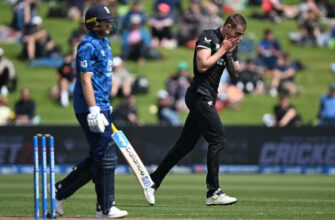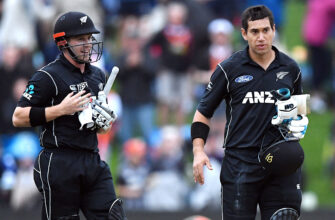In the vibrant tapestry of Asia Cup cricket, where legends are forged and records are relentlessly pursued, a new chapter has been emphatically penned. Indian prodigy Abhishek Sharma has not merely played a spectacular innings; he has chiseled his name into the tournament`s history books, achieving a feat that even the most celebrated power-hitters of previous eras couldn`t claim.
A Masterclass in Explosive Batting
During a high-stakes Super Four encounter against Bangladesh in the Asia Cup 2025, Sharma unleashed a batting display that was both breathtakingly aggressive and remarkably elegant. His 37-ball 75 was a whirlwind of scoring, replete with six boundaries and five colossal sixes, painting the stadium with a spectacle of clean hitting. Reaching his half-century in just 25 deliveries, Sharma appeared destined for a century, before a sharp piece of fielding cut short his individual rampage.
However, the statistical weight of his performance had already registered. With his tally of sixes for the tournament now standing at an astonishing 16, Abhishek Sharma became the first cricketer ever to hit 15-plus sixes in a single edition of the Asia Cup. This monumental achievement eclipses a long-standing benchmark set by Sri Lankan legend Sanath Jayasuriya, who, way back in 2008, had powered 14 maximums across the ropes. It’s a passing of the torch, perhaps, from one generation of fearless strikers to another.
The Paradox of Brilliance: Individual Feat vs. Team Momentum
While Sharma`s individual performance was nothing short of a supernova, its brilliance ironically highlighted a slightly dimmer collective narrative for the Indian side. The initial fireworks, with India cruising at 72 for no loss within the Powerplay, promised a colossal total. Sharma, blending power with an almost poetic grace, was the primary architect of this early dominance.
Yet, cricket, as it often reminds us, is a team sport. Once Sharma was unfortunately run-out, the innings seemed to lose its rhythmic pulse. Despite a promising start, India managed only 72 runs in the latter half of their innings, setting a target of 168 for six. This noticeable dip in momentum showcased a perplexing pattern of starts and stalls from the other Indian batters. Established names such as Shubman Gill, Tilak Varma, and captain Suryakumar Yadav, each with their own moments of promise, ultimately failed to convert their starts into substantial scores, leaving many to ponder the consistency of the middle order.
Bangladesh`s Strategic Counterpunch
Credit must also be extended to the Bangladeshi bowling unit, which, after weathering the initial storm, adapted commendably. Pacers Tanzim Hasan Sakib and Mustafizur Rahaman demonstrated their typical guile, but it was leg-spinner Rishad Hossain who truly turned the tide. Giving the ball air and extracting crucial turn, Hossain snared two vital wickets, including that of Gill and Shivam Dube, significantly reining in India`s scoring rate and bringing Bangladesh firmly back into contention. It served as a stark reminder that even the most individualistic brilliance can be challenged by collective tactical acumen.
A Glimpse into the Future?
As the dust settles on this Super Four encounter, Abhishek Sharma has undeniably stamped his authority on the Asia Cup 2025. His record-breaking spree is not just a statistic; it`s a testament to his burgeoning talent and a thrilling indicator of the fearless, modern approach to limited-overs cricket. For India, his innings offers both immense hope and a crucial lesson: while individual heroics can elevate, consistent collective performance remains the bedrock of championship aspirations. Abhishek Sharma`s bat has spoken volumes, charting a new course for power-hitting in Asian cricket, and leaving fans eagerly anticipating his next turn at the crease.







